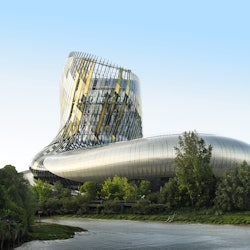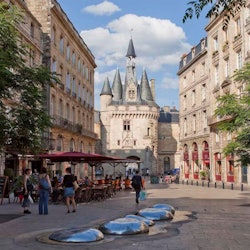Top things to do in France
Exploring the Allure of France: History, Culture, and Scenic Wonders
France is renowned for its art, architecture, romantic vibe and culinary delights. It is a top global travel destination. This article highlights France's most captivating aspects, major attractions, and must-visit locations.
Let's learn a bit more
French Essentials: Your Go-To FAQs
From local customs to must-visit landmarks, explore the most common questions about France.
What are the top cities to visit in France?
- Paris: The capital city known for iconic landmarks like the Eiffel Tower, Louvre Museum, and Notre-Dame Cathedral.
- Marseille: A vibrant port city with rich cultural heritage, stunning coastline, and delicious cuisine.
- Lyon: Famous for its historical architecture, gastronomy, and vibrant cultural scene.
- Nice: Located on the French Riviera, offering beautiful beaches, picturesque old town, and vibrant markets.
- Bordeaux: Renowned for its wine industry, elegant architecture, and charming riverside promenades.
- Strasbourg: A picturesque city with a blend of French and German influences, featuring stunning medieval architecture and the European Parliament.
- Toulouse: Known as the "Pink City" due to its terracotta buildings, offering a lively atmosphere, aerospace industry, and rich history.
- Lille: A dynamic city with Flemish influences, known for its beautiful old town, vibrant arts scene, and delicious cuisine.
- Nantes: A city on the Loire River known for its cultural attractions, innovative art scene, and historical landmarks like the Château des Ducs de Bretagne.
- Avignon: Famous for the Palais des Papes (Palace of the Popes) and the annual Avignon Festival, one of the most important contemporary performing arts events in the world.
What is the best time to visit Paris?
Spring (April to June) and fall (September to November) are generally considered the best times to visit due to mild weather and fewer tourists. However, summer offers longer days and a lively atmosphere, despite being more crowded.
What is the currency used in France, and where can I exchange money?
The currency used in France is the Euro (€). You can exchange money at various locations including:
-
Banks: Banks usually offer good exchange rates and are a reliable option for exchanging currency. They are typically open from Monday to Friday, with some also open on Saturday mornings.
-
Currency Exchange Offices: These are commonly found in airports, major train stations, and tourist areas. They often have longer hours than banks but may charge higher fees or offer less favorable exchange rates.
-
ATMs: Withdrawing money from ATMs using a debit or credit card is convenient and often provides a good exchange rate. Be aware of any fees your bank may charge for international withdrawals.
-
Hotels and Travel Agencies: Some hotels and travel agencies offer currency exchange services, but the rates may not be as competitive as those at banks or ATMs.
-
Post Offices: In France, post offices (La Poste) also provide currency exchange services.
Are credit cards accepted everywhere in France?
Credit cards are widely accepted in France, especially in urban areas and major tourist spots. However, smaller shops, cafes, rural businesses, local markets, and street vendors may prefer cash or have a minimum purchase requirement for card transactions. Visa and Mastercard are the most commonly accepted, while American Express and Discover might not be as widely used. Ensure your card has a chip and you know your PIN. While most toll roads and gas stations accept cards, it's wise to carry some cash for small purchases or in case a card isn't accepted.
Are there any specific safety tips I should know before traveling to France?
Yes, here are some specific safety tips to keep in mind when traveling to France:
-
Be vigilant in crowded tourist areas, as pickpocketing can occur, especially in places like public transportation, markets, and popular attractions.
-
Keep your belongings secure and be cautious of your surroundings, particularly in busy areas and public transportation.
-
Avoid displaying valuable items openly and consider using a money belt or secure bag to store your passport, cash, and credit cards.
-
Be cautious of scams, such as individuals asking for donations or offering to help with directions. It's best to politely decline and keep moving.
-
Stay informed about current events and any travel advisories issued for France.
-
Be respectful of local customs and cultural norms, especially when visiting religious sites or participating in traditional events.
-
Familiarize yourself with emergency contact information, including the nearest embassy or consulate.
-
By staying aware of your surroundings and taking precautions, you can help ensure a safe and enjoyable trip to France.
Are there any cultural norms or customs I should be aware of in France?
There are no crucially important things one should follow, but there are several cultural norms and customs you might be aware of when visiting France:
-
Greetings: When meeting someone for the first time, it is customary to greet them with a handshake. Close friends and family may greet each other with kisses on the cheeks, usually starting with the left cheek.
-
Punctuality: Being on time is important in France, especially for social and business meetings. It is considered rude to be late without a valid reason.
-
Dining etiquette: French dining is a social affair, and there are certain etiquettes to follow. Keep your hands on the table, not in your lap, and wait for the host to start eating before you begin. Also, it's polite to say "bon appétit" before starting your meal.
-
Respect for personal space: French people value their personal space, so it's essential to maintain an appropriate distance when conversing or interacting with others.
-
Language: While many French people speak English, it's polite to greet people in French and attempt to speak the language, even if it's just basic phrases. This effort is often appreciated.
-
Dress code: French fashion is renowned worldwide, and dressing well is important, especially in urban areas. Avoid overly casual attire, particularly in upscale establishments.
-
Cultural appreciation: French culture places a high value on art, literature, and cuisine. Showing an interest in these aspects of French culture can help you connect with locals.
-
Tipping: In France, a service charge is often included in the bill at restaurants, but it's common to leave a small additional tip if you received exceptional service.
By being mindful of these cultural norms and customs, you can navigate social interactions more smoothly and show respect for French culture during your visit.
What traditional French dishes must I try, and where can I find them?
There are numerous traditional French dishes that you must try during your visit to France. Here are some popular ones and where you can find them:
-
Croissant: A buttery, flaky pastry that is iconic in French cuisine. You can find croissants in bakeries (boulangeries) throughout France, particularly in the morning for breakfast.
-
Coq au Vin: A classic French dish consisting of chicken braised with wine, mushrooms, onions, and sometimes bacon. You can find coq au vin in traditional French restaurants (bistros) across the country.
-
Bouillabaisse: A flavorful fish stew originating from the Provence region, typically made with various types of fish and seafood. Bouillabaisse is commonly found in coastal areas, particularly in Marseille and the French Riviera.
-
Quiche Lorraine: A savory tart made with eggs, cream, cheese, and bacon or ham, originating from the Lorraine region. Quiche Lorraine is served in many cafes and bakeries throughout France.
-
Ratatouille: A vegetable stew made with tomatoes, zucchini, eggplant, onions, peppers, and various herbs. Ratatouille is a traditional dish of Provence and can be found in restaurants across the country.
-
Escargots: Snails cooked with garlic butter and parsley, often served as an appetizer. You can find escargots in traditional French restaurants, particularly in Paris and other major cities.
-
Cassoulet: A hearty stew made with white beans, duck confit, pork sausages, and sometimes other meats. Cassoulet is a specialty of the Languedoc region and is commonly found in restaurants in southwestern France.
-
Tarte Tatin: An upside-down apple tart with caramelized apples, baked in a pastry crust. Tarte Tatin is available in many patisseries (pastry shops) and cafes throughout France.
These are just a few examples of traditional French dishes, but there are many more to explore depending on the region you visit. Be sure to indulge in the local cuisine and savor the flavors of France during your travels!
How do I get around Spain efficiently, especially between cities and regions?
Getting around France efficiently, especially between cities and regions, can be easily accomplished through various transportation options:
-
Train: France has an extensive and efficient train network operated by the national railway company, SNCF. The high-speed TGV trains connect major cities like Paris, Lyon, Marseille, Bordeaux, and others, making intercity travel fast and convenient. You can purchase tickets online or at train stations.
-
Bus: If you're traveling on a budget, buses can be a cost-effective option for intercity travel. Companies like FlixBus and Ouibus operate routes between major cities and regions, offering affordable fares and comfortable rides.
-
Car: Renting a car gives you the flexibility to explore rural areas and smaller towns at your own pace. France has well-maintained highways (autoroutes) that connect major cities and regions. However, traffic in urban areas, especially during peak hours, can be congested.
-
Plane: For longer distances, flying may be a viable option. France has several domestic airports, with major hubs in Paris (Charles de Gaulle and Orly), Lyon, Marseille, and Nice. Domestic flights are available to many cities across the country and can save time, especially for traveling to distant regions like Corsica.
-
Carpooling: Platforms like BlaBlaCar connect drivers with empty seats to passengers traveling in the same direction. This can be a cost-effective and eco-friendly way to travel between cities and regions, as well as an opportunity to meet locals and fellow travelers.
-
Bicycle: France is known for its scenic countryside and cycling-friendly infrastructure. You can explore regions like Provence, Burgundy, and the Loire Valley by bike, either bringing your own or renting one locally. Many cities also have bike-sharing schemes for convenient urban exploration.
-
Walking: While not practical for long distances between cities, walking is an excellent way to explore smaller towns, neighborhoods, and scenic areas within cities. France has numerous well-marked hiking trails and pedestrian-friendly areas worth exploring on foot.
By utilizing these transportation options based on your preferences, budget, and itinerary, you can efficiently navigate France and enjoy all that this diverse country has to offer.



